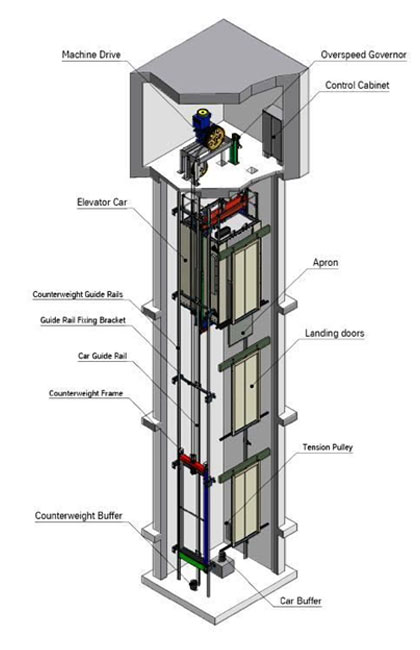Affordable Lift Repair Near Me: Professional Professionals at Your Service
Affordable Lift Repair Near Me: Professional Professionals at Your Service
Blog Article
Exploring the World of Elevators: Common Issues Encountered by Different Lift Mechanisms
As we navigate with the upright transportation systems of modern structures, elevators stand out as an essential part of our everyday lives. However, behind their smooth operation exists a world of detailed systems that can sometimes come across obstacles. From hydraulic lifts to traction systems and machine-room-less layouts, each lift type includes its collection of typical concerns. Understanding these obstacles is important for making certain the smooth functioning of these essential systems. Let's check out the intricacies that underlie the operation of lifts and the potential problems that can emerge, shedding light on the complex internet of lift systems.
Hydraulic Elevators
Hydraulic lifts, usually chosen for low-rise buildings, use fluid stress to regulate the motion of the lift car (lift repair companies). This mechanism includes a hydraulic pump pushing oil right into a cyndrical tube, triggering the lift to move in the wanted direction. While hydraulic elevators are understood for their peaceful and smooth procedure, they do feature their very own collection of usual concerns
One widespread issue with hydraulic elevators is oil leakage. Additionally, issues with the control system, such as damaged shutoffs or a malfunctioning pump, can trigger interruptions in the elevator's activity.
Normal maintenance and prompt repairs are important to ensure the smooth performance of hydraulic lifts. By dealing with these common concerns proactively, structure owners can minimize downtime and make certain the security and efficiency of their upright transport system.
Traction Lifts
When thinking about vertical transport systems in buildings, another usual type apart from hydraulic lifts is the traction lift. Traction lifts operate making use of a system of ropes and weights that move the lift vehicle by gripping onto the hoist ropes. This system enables smoother and much faster vertical transport contrasted to hydraulic systems.
One of the usual issues encountered by traction lifts is rope wear. The continuous activity of the ropes within the traction system can bring about tear and wear gradually, potentially triggering the lift to malfunction or come to be risky for usage. Routine inspections and maintenance of the ropes are essential to make sure the elevator's appropriate performance and security.
An additional issue that grip lifts may encounter is associated to the control system. Troubles with the control system can lead to issues such as erratic activity, hold-ups in action times, or even complete closures. Normal screening and upkeep of the control system are important to stop such problems and make certain the elevator's reliability.
Machine-Room-Less (MRL) Lifts

One of the vital elements of MRL elevators is the portable gearless traction equipment that is set up within the hoistway. This machine successfully drives the elevator car without the demand for bulky tools found in typical traction lifts. Furthermore, MRL lifts usually use a counterweight go to this web-site system to stabilize the automobile, further improving their power effectiveness.
Despite their benefits, MRL lifts might face difficulties associated with maintenance and repair work as a result of the constrained space for devices setup. Accessibility for servicing components within the shaft can be limited, needing specialized training for professionals. Proper maintenance routines and routine examinations are vital to make sure the continued smooth operation of MRL lifts.
Overloading and Weight Limitation Issues
Straining and weight limitation concerns are crucial issues in elevator procedures. Lift makers design lifts with details weight abilities to make sure passenger safety and tools durability.
When elevators are overloaded, it places extreme strain on the electric motor, cords, and other parts, possibly causing breakdowns or failures. If they spot excess weight, safety and security systems such as sensing units and overload Visit Your URL sensors are in area to stop elevators from relocating. Additionally, surpassing weight limits can bring about enhanced power consumption and damage on the elevator system.
To minimize overloading concerns, building supervisors should plainly present weight limitations in lifts and educate passengers on the importance of sticking to these constraints - lift repair companies. Routine upkeep checks by certified service technicians can also assist make certain that elevators are operating within secure weight parameters. By attending to overloading and weight limit problems proactively, structure proprietors can enhance elevator safety and security and efficiency
Electrical System Failures
Going beyond weight restrictions in elevators can not only cause mechanical concerns but also potentially add to electric system failings within the lift infrastructure. Electrical system failures are an important concern in elevator operation, as they can trigger unforeseen closures, breakdowns, or perhaps security threats. One typical electric concern is the overheating of parts due to excessive present circulation brought on by straining the lift past its ability. This can lead to damage to the motor, wiring, or control systems, causing pricey repair helpful hints services and downtime.
Regular upkeep and inspections are vital to identify and resolve potential electric issues immediately, ensuring the risk-free and reliable operation of elevator systems. By sticking to weight limits and carrying out regular electrical system checks, building proprietors can mitigate the danger of electric failings in elevators.
Final Thought

Hydraulic lifts, typically preferred for low-rise buildings, make use of fluid pressure to regulate the motion of the lift vehicle.When taking into consideration vertical transport systems in buildings, one more usual type apart from hydraulic elevators is the traction lift. Traction elevators run using a system of ropes and weights that relocate the elevator cars and truck by gripping onto the hoist ropes. Unlike standard lifts that require a different equipment room to house the tools, MRL lifts integrate most of the parts within the shaft, eliminating the requirement for a committed device space.In verdict, elevators deal with typical concerns such as hydraulic malfunctions, traction system failures, and electric system troubles.
Report this page